In two days, Donna Strickland will be on a flight to Stockholm to pick up her Nobel Prize in Physics. But today, she is carrying a slender wooden cross across the sanctuary of Westminster United in Waterloo, Ont., answering questions about how she sees God.
It’s her turn to be lay co-ordinator of the Sunday morning service, and an imminent trip to Sweden — even such an illustrious one — is not going to stop her from taking part in the life of her congregation or from doing yet another interview.
You may unsubscribe from any of our newsletters at any time.
“Donna is so down-to-earth and real,” her friend Lynn Macaulay tells me. “And now here she is, having you here on the day she’s handing out hymn books and turning on the lights and making sure the washrooms are all clean. Because, what else would a Nobel Prize laureate be doing? But when you’re Donna, that’s what you would be doing!” She turns to Strickland: “Right, Donna? Because you are just so fabulous!”
Strickland’s laughter peels through the sanctuary: “Yeah, I’m just so fabulous.” And then the characteristic wry aside: “I mean, half the time, I’m not even here.”
Strickland, 59, has spent a lifetime nonchalantly bucking convention. She is not just a female scientist, but also a female physicist, which is far more rare. And not just any physicist, but one of only 209 in the world who have ever won the Nobel, one of only three female physicists to win it and the only one of those three still alive. And, she got her Nobel not after decades of slogging, but for her very first paper, published in 1985 when she was still a PhD candidate. The elegant three-page article describes a powerful new type of laser she and her supervisor, Gérard Mourou, developed, one that essentially harnesses the energy of light in a way that could sculpt matter.
Add to that the fact that she is a physicist who has an active religious faith, goes to church regularly and is so involved that she is past chair of her congregation’s council. (They let her out of being chair of the stewardship committee when she won the Nobel this past October. They figured she’d be too busy.)
Strickland leaps over expectations in other ways, too. She’s been coming to this church for more than 20 years because it was custom-built to share space with the Temple Shalom, where her husband, electrical engineer Doug Dykaar, worships. (Ever since the Nobel announcement, he’s been proudly calling himself Mr. Strickland and sending press clippings to the extended clan at every turn.) That’s why the Christian cross has to be locked away outside of services, just as the Jewish ark does. It never occurred to either Strickland or Dykaar to convert to the other’s faith when they married. In fact, they assumed more couples like them would flock to the building. Wrong. Macaulay calls them “our special interfaith couple.”
“Strickland breaks down barriers on multiple fronts,” says the sociologist Elaine Howard Ecklund, director of the Religion and Public Life program at Rice University in Houston. She helped conduct the first international study of what scientists think about religion, and the book she co-authored on its findings, Secularity and Science, is out in June.
Despite all that, Strickland, who is now greeting congregants at the entrance to the sanctuary — “Oh, aren’t you looking very dapper!” she tells one man — doesn’t give the impression that she sees herself as an activist or as a rebel or even as a torchbearer. She seems incapable of being disgruntled. In fact, she is that rarest of 21st-century humans — one who seems perpetually amused. She is simply living her life, joyfully immersed in her science.
And yet, in the wake of the Nobel, she has found herself unexpectedly at the intersection of several important conversations going on in society: the tricky dance between faith and science; how female scientists still struggle to get recognition; women in the workplace in a time of #MeToo; questions about whether science ought to inform public policy; and the larger social confusion raging about truth, lies and outright propaganda.
She’s not sure how it will change her. It still feels unreal, she tells me, handing out hymnals and orders of service. “Thank you, your Holiness,” one wag tells her, taking the books. Again, her laughter ripples across the sanctuary.
For her, going to church is about finding inner peace. And church has always been the United Church, right from her childhood in Guelph, Ont.
The tussle between science and faith has a storied pedigree. You could track it back to the 17th century when the Italian astronomer Galileo Galilei — an early physicist and devout Catholic — ran into trouble with the Inquisition when he argued for the Earth’s revolution around the sun rather than the Vatican-approved opposite. He was convicted of a kind of heresy, condemned to life under house arrest and forced to recant the idea. The book he wrote on the subject was banned.
Then, in the 19th century, the Victorian naturalist Charles Darwin published On the Origin of Species, which explained evolution and natural selection. Religious institutions saw it as a wholesale attack on the biblical description of how humans had come to be on the planet and therefore on Christianity itself. An article around the time in the Dublin Review, a Roman Catholic publication, roared: “The salvation of man is a far higher object than the progress of science,” and urged the church to suppress the science if it would put souls in jeopardy.
By 1925, the frame of science as the mortal enemy of faith was set. That was the year of the infamous Scopes Trial, during which a Tennessee high school teacher, John Scopes, was convicted of teaching evolution to students, though he was later acquitted on a technicality. Versions of the battle over evolution have been played out in the courts and the news ever since, cementing the idea that religion is hostile to science.
More recently, science has also taken aim at faith. The British evolutionary biologist Richard Dawkins argued in his influential work The God Delusion that belief in God is both wrong and dangerous. And the American neuroscientist Sam Harris won a 2005 PEN award for his bestselling book The End of Faith, in which he contended that organized religion can be dangerous.
Physicists have played a special role in the faith-versus-reason conversation, and so have their findings. Strickland, after all, is taking her place in the Nobel firmament alongside such physicists as Albert Einstein, J.J. Thomson, Max Planck, Niels Bohr and Werner Heisenberg, who were honoured for helping to unlock the most fundamental secrets of the universe. (“I’m no [Sir Isaac] Newton. And I’m certainly no Einstein,” she tells me, slightly shocked at the idea that she is in the company of such luminaries.) The structure of the atom. The existence of the electron. Quantum mechanics. Their work — and that of many others — led to quantum field theory, today’s most precise description of what the universe is made of.
In a nutshell, it says the universe and everything in it is made of fields, fluid-like lines that move in peculiar ways and sometimes get tied up into subatomic particles that can make things like planets and stars and you and me. And it’s written in math, not scripture. It’s testable, not taken on faith. This is all distinctly different from the tale in the Book of Genesis explaining what the world is and how life emerged. In fact, the findings of physicists were one key to scotching the centuries-old conviction that the Bible was the ultimate scientific authority.
“I think that part of the historical mission of science has been to teach us that we are not the playthings of supernatural intervention, that we can make our own way in the universe and that we have to find our own sense of morality,” Steven Weinberg, a Nobel physicist of 1979, said in a PBS documentary. “And I would hate to have those gains made by science vitiated by a misguided reconciliation with religious life.”
The tendency for famous physicists to eschew religion has been driven forcefully home twice in recent months. In October, Stephen Hawking’s final book came out, months after he died. In it, Hawking, who was founder of the Centre for Theoretical Cosmology at the University of Cambridge, addresses what he calls the big questions. Is there a God? Did God create the universe? His answer: No. “[I]t’s my view that the simplest explanation is that there is no God. No one created the universe and no one directs our fate,” he wrote.
And in December, Christie’s auction house sold for nearly US$3 million the so-called God letter written by Einstein in 1954: “The word God is for me nothing but the expression and product of human weaknesses, the Bible a collection of venerable but still rather primitive legends. No interpretation, no matter how subtle, can (for me) change anything about this.”
Faith and science, it would seem, are cranky bedfellows.

The Sunday service has not yet started, and Strickland has paused in her task of setting up the sanctuary to think about the universe. In fact, she’s thinking so hard that, for a few moments, she has plopped down on a chair in front of the pulpit. She’s slender. She keeps wrestling with the waistband of her light grey trousers, as if annoyed that it is so loose. Her flats are sensible, her shirt, crisp white. She wears her greying hair in a straight bob, the fringe of her bangs level with her eyebrows.
Her sanctuary is modern, more cinder block than polished wood and more ranch house than towering spire. The building is set in a small green space in an immaculately groomed neighbourhood of two-storey houses dominated by double garages and late-model cars. She lives close enough to walk to church.
The universe amazes her. A beach sunset. A crocus opening in the spring. “Call it Mother Earth or God or whatever,” she says. I press her. Is it Mother Earth? Is it God? “I’d probably call it God, ’cause it’s as good a word as any. But do I have my own image of God? I don’t think so. I just think it’s Creation itself or something. We’ve had the same energy since the Big Bang. Where did the energy come from? Don’t know. Want to wonder about that.”
Her scientific discipline is based on the practice of describing what the universe is and how its components function. In fact, her Nobel-winning research with high-intensity laser pulses involves manipulating photons, the fundamental units of the electromagnetic field, to make them work together. When they can be made to do that, they can be wielded as a precision tool, doing such things as eye surgery. It’s practical, even mechanical.
But sitting here in her church, she has turned philosophical. She is thinking about the why. It’s a question science cannot answer. Not even quantum field theory. “You know, every so often you sit there and you think, now, why are people hurtling around on this Earth going ’round the sun, which is still just a speck in the whole blessed universe? We are so insignificant to this whole thing and yet we keep thinking how important we all are. And so I have to think there’s some reason for us specks to be on this other speck in this giant thing. I just wonder what’s out there that wanted this to happen.”
However, it’s not the quest for cosmic answers that keeps Strickland coming back to the pew — physics and faith are separate worlds to her. Nor is she here because she thinks God is a magical being who will grant her prayers with the flick of a wand. It’s not the allure of belonging to a church with a social justice mandate, although she’s happy that hers is an inclusive, big-hearted congregation. And she’s definitely not a Bible-thumper who wants to tell others how to conduct their lives. That’s why it’s immaterial to her whether her husband is Jewish or Christian or something else. She is simply not interested in a literal reading of the Bible. “I think the Bible was written by humans for the humans of their era,” she says.
For her, going to church is about finding inner peace. And church has always been the United Church, right from her childhood in Guelph, Ont. She loves to sit in the sanctuary, quietly singing the hymns — she is an alto — and savouring the reminder that the world is a complex place and that she is just a tiny part of it. “Almost every religion is about love,” she says.
She doesn’t see why being a physicist — even a Nobel Prize-winning one — would be at odds with having religious faith, Einstein and Hawking notwithstanding. “I don’t quite get why that would be so,” she says, politely.
Rice University’s Ecklund says Strickland is not alone in her beliefs. Privately, many scientists say they believe in some form of deity or higher power: 51 percent of American scientists, according to a Pew Research Center poll in 2009. (By contrast, 95 percent of Americans as a whole have that belief.) Ecklund and her collaborators’ research found that more than half of scientists in India, Italy, Taiwan and Turkey identify themselves as religious.
“It’s not the case that [science and faith] have to be in conflict,” Ecklund says. “It’s that there are cultural expectations that scientists are not religious people, and then if one is a religious person you can start to feel that you have to fall underneath the radar — sort of keep it on the down-low.”
The Irish-born astrophysicist Jocelyn Bell Burnell has struggled with how people perceive her faith, not so much among scientists as among fellow Quakers. Bell Burnell, now 75, waited until she was almost 70 to be explicit about her theology. She held back partly because her views have evolved over time but also because she didn’t want her understanding of God “unnecessarily to rock other people’s fragile boats of belief,” she explains in her 2013 talk “A Quaker astronomer reflects: Can a scientist also be religious?”
“So I do believe in a God,” she continues. “I believe there is something more to life than physical existence — that there is an inner life. However, I have changed God’s job description. I do not believe in a God who was the prime creator — the initiator of our physical universe; the physical universe seems to me to be purposeless. I envisage a loving, caring, supportive, empowering God, a God who works through people … a God of inspiration.”
On balance, Bell Burnell believes that God is not merely a construct of the human imagination but is independent of us. And she also acknowledges that her beliefs challenge traditional Christianity and that that is uncomfortable. (She doesn’t say for whom.)
Ecklund points to signs that other scientists are becoming more comfortable talking about their faith. A greater proportion of top scientists is Catholic today compared to a few decades ago, one of her studies showed. And the Catholic Church is openly impatient with an anti-science, literalist bent. The Vatican has been pro-evolution for years and has a highly respected astronomy observatory with a stated mission to “remind churchgoers that there’s nothing to be afraid of in science” and which says that “the Bible is not a science textbook.” Pope Francis is a staunchly pro-science pontiff. Consider, for example, his ecology-laced encyclical on climate change, Laudato Si’, published in 2015.
Even more interesting, some conservative Protestants are engaged in an impassioned pro-science conversation these days, too, Ecklund has found. Nearly half of evangelical Protestants think science and religion can be used to help each other, according to her 2018 book with co-author Christopher P. Scheitle, Religion vs. Science; seven in 10 think the next generation will have more opportunities thanks to science and technology. That’s a break from recent headlines like the one about an Arizona school superintendent who appointed a creationist-biologist from Arizona Christian University to a panel reviewing the science curriculum’s evolution standards. The superintendent said she was being criticized for holding a “Christian world view.” As for the biologist, he told a reporter that teenage dinosaurs were present on Noah’s ark.
“I envisage a loving, caring, supportive, empowering God, a God who works through people … a God of inspiration.”
Jocelyn Bell Burnell
Strickland came of age during the 1970s push for women’s rights. She was convinced she could do anything she set her mind to. And what she set her mind to was science. It was a default position, she says. One thing she happened to be good at. “And really, I wasn’t very good at much of anything,” she says, still chatting with parishioners and handing them their hymnals while the choir rehearses in the background. (“Enjoy your journey!” “Thank you. I leave Tuesday!”)
“I’m not athletic. I’m not artistic. Writing an essay — please don’t ask me to. It was pretty limiting.…To me, the science classes and the math classes were always the fun classes.”
One of the congregants stops to ask if she’ll be getting a souvenir video of the awards ceremony. She patiently explains that it will be livestreamed and then posted to YouTube, so she doesn’t really need a video. He seems a little disappointed. “I get the gold medal, so, you know,” she says, laughing. He looks slightly wistful. Once, he got to touch a Stanley Cup ring, he confides, and he even got to wear it. “Really? Okay! If you want to touch a Nobel Prize, I’ll bring it,” Strickland promises.
She’s conscious that she will be representing women on that Stockholm stage. She feels the weight. “Had it not been me, but had it been a different woman, I probably would have been: ‘Way to go, girl! One for the women!’” she says.
Before she won, she hadn’t noticed how few women were Nobel physicists. She was surprised there were only two. The first was Marie Curie, who won in 1903, for work on radioactivity. (Curie won again in 1911 in chemistry and remains the only scientist — male or female — to have won in two science categories.) The second was Maria Goeppert Mayer, who won in 1963 for developing a model of how the insides of atoms work. During large chunks of her career, Goeppert Mayer had to conduct her highly sophisticated physics as a volunteer — she was unable to get a paid position because her husband was already employed by the universities she was working with. Strickland used Goeppert Mayer’s PhD thesis work in her own doctoral research.
In fact, it’s impossible to talk about Strickland’s Nobel Prize without talking about the long string of female scientists who have not won. Among the most famous is the chemist Rosalind Franklin. She made early X-ray images that hinted at the double helix structure of DNA. They were shown to other scientists without her permission. Those male scientists, Francis Crick, James Watson and Maurice Wilkins, won the Nobel in the category of physiology or medicine in 1962 for their work on the double helix, for which Franklin was scantily credited. Franklin had died of ovarian cancer four years earlier, at the age of 37.
And then there’s Bell Burnell. Her supervisor at Cambridge, Antony Hewish, won the Nobel in 1974 for their discovery of pulsars, which are immensely dense stars composed of fast-rotating neutrons. From deep in space, these neutron stars send out pulses of radio waves, perceived here on Earth as something like a lighthouse’s spotlight rhythmically swooping across a night sky. Bell Burnell and Hewish’s discovery has been called one of the great surprises in the history of astronomy. It’s credited with helping astrophysicists understand the life cycle of stars and map the Milky Way and other parts of the visible universe. When Hewish won the prize and she did not, there was an outcry.
Last year, more than 50 years after her discovery, Bell Burnell got the US$3-million Breakthrough Prize in fundamental physics, an award funded by some of the world’s tech giants, including Mark Zuckerberg, the founder of Facebook. Many saw it as the righting of a great wrong. Bell Burnell used the money to fund scholarships in physics for people from underrepresented groups.
And it’s not just that women have lost out on so much of the traditional science glory. Over time, they have been deliberately shut out of the world of science. For most of the centuries that humanity has had universities, women have been forbidden to attend them, much less study science, gain a higher degree and then spend a career participating in the research that might allow them to qualify for a prize. Cambridge, for example, didn’t allow women to earn degrees until 1947. It was 1948 before the University of Oxford allowed a woman to become a full professor.
Strickland’s mother, Edith, born in 1930, was dissuaded from becoming a mathematician or scientist, even though she was brilliant at those subjects — women, she was told, shouldn’t do those things. She started studying at the University of Western Ontario at the precocious age of 16 and ended up being an English teacher. But she told her daughters to go where their hearts led them. Strickland’s older sister, Anne, is an engineer. Strickland’s daughter, Hannah Dykaar, is doing her PhD in astrophysics.
The Strickland women are still ahead of the curve. Even today, women get fewer PhDs in the United States in every scientific discipline except biology, where they have inched over the 50-percent mark for the past decade, according to the American Physical Society. As recently as 2017, not quite one in five PhD graduates in physics in the United States was female, the lowest percentage of any of the sciences. And as for Hawkings’ Centre for Theoretical Cosmology at Cambridge, its staff list is still startlingly male.
Once they reach the workforce, female scientists are far likelier than men to experience sexual harassment and discrimination, according to a report last year from the Pew Research Center. Recently, several eminent male physicists have been accused of inappropriate conduct toward their female colleagues, and some have left their workplaces as a result.
After Strickland’s win was announced — she shared half the prize with her PhD supervisor, Gérard Mourou, while Arthur Ashkin, who invented laser tweezers, won the other half — the fact that she was not yet a full professor at the University of Waterloo came in for sharp criticism. She’s since received that post. As well, it turned out that Wikipedia, long criticized for bias toward male achievements, had turned down a page for Strickland. That’s been remedied, too.
Strickland has always been one of the few women in the lab, but has felt accepted on her own merits — even welcomed. She can’t recall too many “silly” comments from men. But about 20 years ago, before #MeToo, she told another female physicist that she hadn’t experienced discrimination in the workplace. The woman said, bracingly: “Well, it’s mostly the feminine ones who do.”
Strickland laughs uproariously.

The service is finished. Strickland has collected all the hymnals, arranged them neatly on the book trolley, carefully gathered the orders of service for recycling, put the cross away in its locked metal cabinet, and received hugs and good wishes for her journey. We’re sitting down to chat for a few last moments in an office down the hall from the sanctuary.
Strickland’s year will be consumed with public lectures around the world explaining the work that won her the Nobel Prize. The university has freed her from teaching for the year, but she can’t quite let go of the lasers class. She’s going to team-teach it, dropping in when she’s in town. She’s passionate about the value of education, and of scientific education in particular. It’s what made the young United States a world power, she believes. It scares her now to see the fear of education in North America and the urge to hide from truths.
And she hopes to spend time in her lab, her happy place. One of the Holy grails of laser research is to create powerful laser scissors that could be used to snip just one of the bonds holding a molecule together. A first step is to harness photons from an even broader spectrum of the electromagnetic field, coaxing them to work with each other. So more diversity and more co-operation makes for more power. It’s a description of social progress and hope. If I were looking for a metaphor to describe what Strickland’s Nobel win means, that would be it, written in the poetry of lasers.
She’s telling me about the next few tightly choreographed days, the details bursting out of her, as if she can’t believe it herself. The ball gowns. Learning to bow to the Swedish king. Photographs. Interviews. The exquisite banquet. Being swept away to the ball just before midnight. Dining at the palace the next day with the royal family.
Like so many others, I will be riveted to it online. I will marvel when she makes her stately entrance, resplendent in a superb scarlet ball gown, bobbed hair caught up in an elegant chignon. I will notice that the King of Sweden accompanies her to the four-hour banquet and that they will sit next to each other there. I will watch her witty after-dinner remarks, go with her in my imagination to the first ball (until 2 a.m.) and then the after-ball (until 4 a.m.) put on by students. My throat will catch with pride. The first female physics Nobelist in 55 years, and a Canadian to boot.
“It’s huge. It really is,” she tells me, sitting there in the church. “And all because I just got to do a really lucky PhD project.”
This story first appeared in the May 2019 issue of Broadview with the title “Nobel winner. Scientist. Church lady.” For more of Broadview’s award-winning content, subscribe to the magazine today.

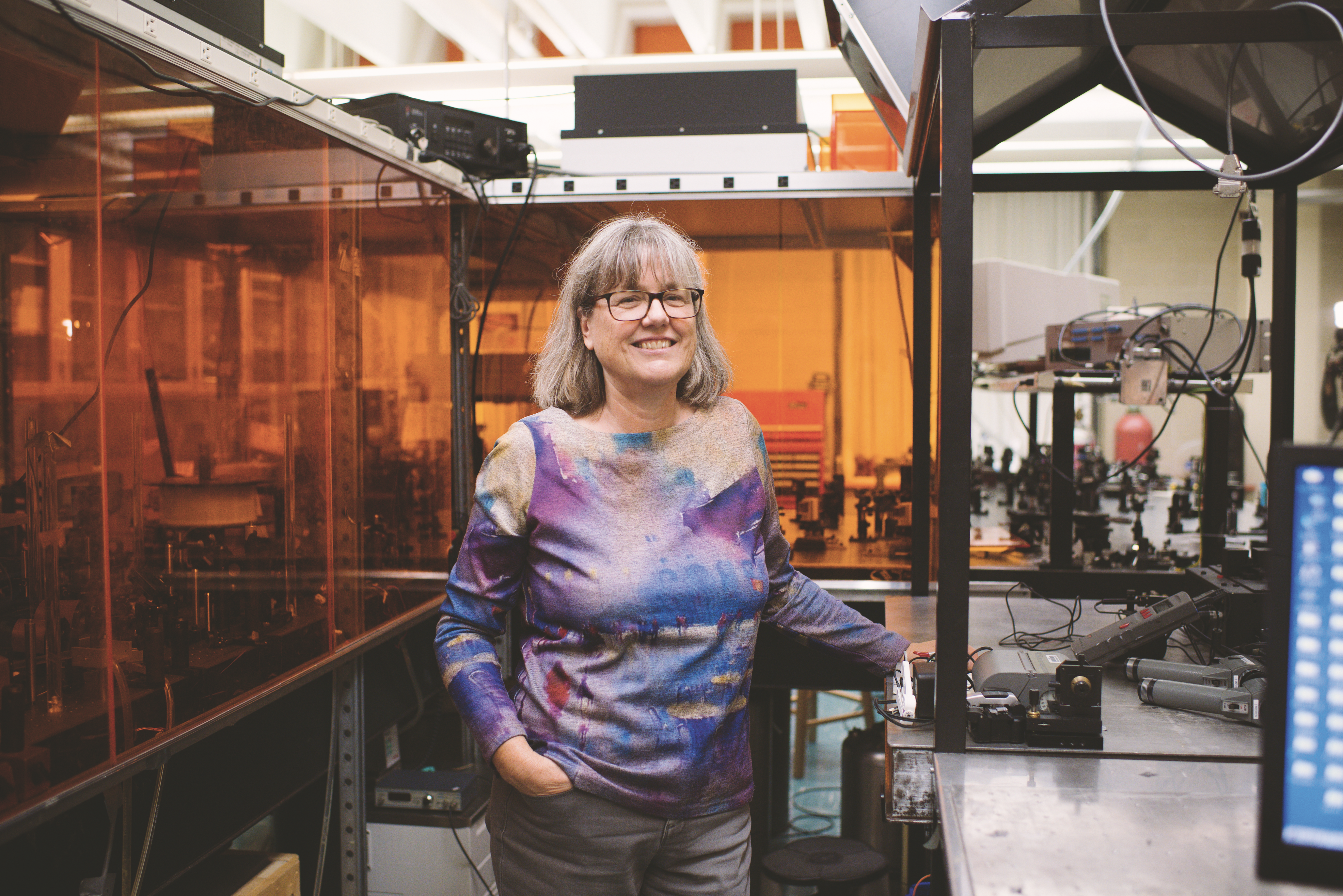








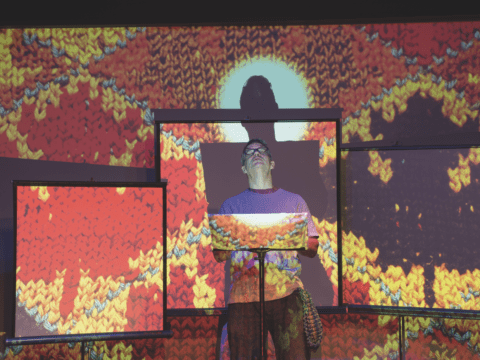
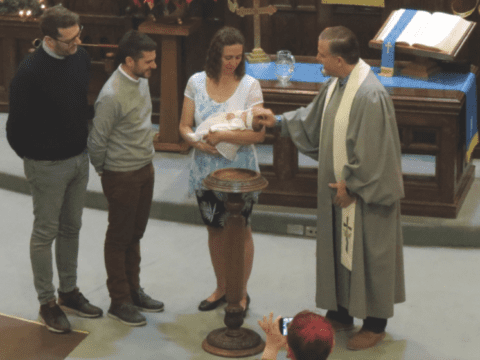
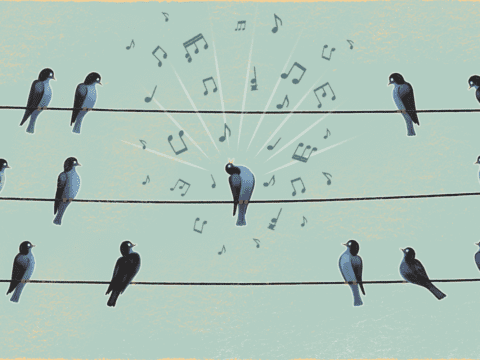

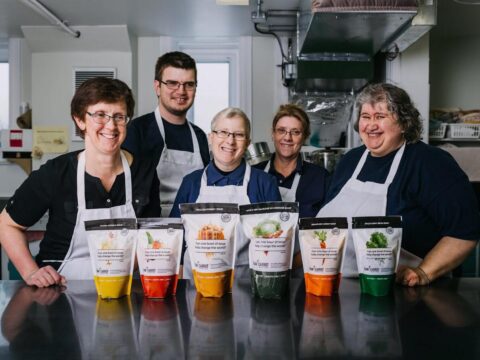
Congratulations Donna Strickland , what an honour to have a Nobel Prize. You worked hard for it and you now have recognition.
This article has many fronts and I’m trying hard to limit my comments .
This article implies a war with religion and science. Major religions do not question or deny science, or the study of it. Oddly it is Christians, Jews and Muslims who have greatly contributed to science. But it is science that tries to deny God, and religion (especially Christianity) needs to defend its views by trying to show errors in science’s so called “proofs” that God does not exist, or that He is just a “prime mover”. By the way, this isn’t something recent either; Ludwig Andreas von Feuerbach 1840’s and Friedrich Wilhelm Nietzsche in 1860’s used science in trying to deny God.
Jocelyn Bell Burnell’s comment: “I believe there is something more to life than physical existence — that there is an inner life. However, I have changed God’s job description. I do not believe in a God who was the prime creator — the initi¬ator of our physical universe; the physical universe seems to me to be purposeless. I envisage a loving, caring, supportive, empowering God, a God who works through people … a God of inspiration.”
What you have done is try to fit God into whom you want Him to be. We cannot all do this, or we would have anarchy. What you also want is a “god” who fits your selfishness. Your description leaves out a Holy God, one who must also judge and correct to align His holiness (assuming one believes in such) to our ineptness. We need to have both a caring God and a righteous God to exist.
I would dare to say that most scientists and medical professions must believe in something more than a “big bang theory”, namely evolution. There are far too many examples of something more than just “chance” that is proposed by science.
Fabulous, inspiring, faith-affirming article. Every Blessing going forward!
A fine journalist botched this article.
A conflicting stew of disconnected information about Stickland’s own biography, women scientists, lack of women in the Noble arena, hit and miss religion/spirituality. In the end, no one topic given a just or fair hearing.
How sad for what is a very fine female, physicist, United Church member and volunteer, partner, mother, Canadian, now Nobel recipient.